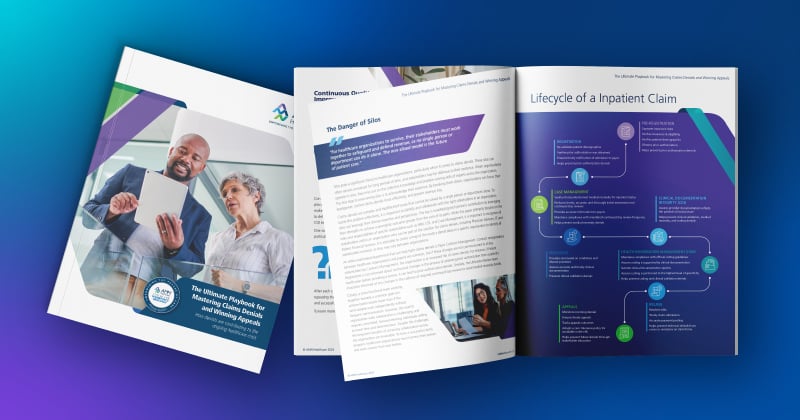
Webinar Recap: Introducing ICD-11 MMS
As the healthcare industry continually evolves, it is increasingly important for healthcare organizations to support their employees with relevant resources that inform their careers and daily roles. To provide useful insights for our valued healthcare professionals, AMN Healthcare Revenue Cycle Solutions (RCS) offers monthly webinars covering a wide array of topics, from proper coding procedures to important industry updates.
In a recent edition of the RCS Webinar series, we featured an Introduction to ICD-11 MMS (Mortality and Morbidity Statistics).
An Overview of ICD-11 MMS
The learning objectives of the webinar, Introducing ICD-11 MMS, were to gain both a conceptual and practical understanding of ICD-11 medical coding updates. After successful completion of the webinar, participants were able to:
- Review latest news of implementation
- Introduce ICD-11 MMS code assignment components
- Compare I-11 MMS to I-10-CM
- Demonstrate examples of coding with ICD-11 MMS and ICD-10-CM
ICD-11 Updates
In recent ICD-11 implementation news, the webinar reviewed ICD-11 MMS and discussed the current studies being performed to determine if ICD-10-CM is compatible with ICD-11 and if a clinical modification will need to be built for ICD-11. Additionally, participants learned about different online coding tools to assist medical coding professionals with new and existing implementations.
Blue Browser
This platform is used to look up codes. Users enter the statement or term in the coding tool, select the matching term or the one closest to what they are looking for from the displayed options. Then, verify the result in the tabular list browser view for exclusions, inclusions, and notes given at the level of that category, its grouping levels, and at the chapter level.
Orange Browser
This is a maintenance platform. This tool allows users to contribute to the updating and continuous improvement of ICD-11. Such input is submitted in the form of a proposal with a detailed rationale, scientific evidence, and peer reviewed references to justify consideration for inclusion on an annual basis.
ICD-11 MMS General Features
Next, the webinar explained the structure of ICD-11 MMS codes by component, including:
Structure – Alphanumeric Code
- First character corresponds to chapter number (1-9 for first 9 chapters) and (A-Z for following chapters)
- Codes starting with “X” are extension codes
- Letter in second position
- Allows clear distinction between ICD-10 and ICD-11
- Number in third position
- Prevents spelling undesirable words
- Letters “I” and “O” not used
- “Other” last character “Y”
- “Unspecified” last character “Z”
Stem Code – 1A00.00 – ZZ9Z.ZZ
- 4 characters
- May be assigned alone
Extension code – Postcoordination
- Include anatomy, agent, histopathology, and other aspects
- Not used alone but added to a stem code
After reviewing a detailed overview of ICD-11 MMS coding structure, participants put concepts into practice—demonstrating the combination of stem codes and extension codes, comparing ICD-11 MMS with ICD-10-CM, and finally applying the different coding assignments to various medical conditions and practicing scenarios.

At the conclusion of the webinar, participants were able to complete a post-webinar quiz to assess learning takeaways, which in turn allowed them to earn continuing education unit (CEU) hours for accomplishing the course.
If you are interested in participating in a future AMN Healthcare RCS webinar course to further develop your professional skills and/or fulfill CEU requirements, visit our website to explore upcoming installments and register today!
Additional Revenue Cycle Resources:
- Cancer Registry: Learn about Cancer Registry careers and opportunities.
- Case Management Utilization Review: Join a team pairing decades of Revenue Cycle knowledge with the support of one of healthcare’s most trusted brands.
- Refer-a-Friend: Make up to $2,000 per referral.
Latest News
Case Study: Establishing a Strong Financial Foundation through a Commitment to Quality
Our recent cases study showcases how a healthcare organization in the South tackled issues with its quality scores and revenue by implementing a Clinical Documentation Integrity (CDI) program in
The Ultimate Playbook for Mastering Claims Denials and Winning Appeals
This comprehensive guide examines the complexities of appeals and denials and offers critical strategies for navigating toward a more financially stable future for healthcare organizations
Continuous Quality Improvement: Using the PDSA Cycle to Solve Claims Denials
One effective Continuous Quality Improvement (CQI) model is the PDSA (Plan-Do-Study-Act).
Webinar: Protecting Your Healthcare Data: Uncovering Vendor Cyber Security Threats
In this recorded webinar, you will discover how to safeguard your data, the top qualities to look for when selecting a secure vendor, and cyber security best practices to protect your valuable
Case Study: Advent Health Reduces Avoidable Days to Improve Patient Satisfaction & Drive Savings
Download the full case study to discover how AdventHealth partnered with AMN Healthcare Revenue Cycle Solutions (RCS).
3 Strategies for Cultivating a Culture of Connection, Development, and Loyalty in the Modern Workplace
Explore job satisfaction: Learn 3 strategies for fostering connection, development, and loyalty in our white paper.
Outpatient Clinical Documentation Integrity Solution
The current trajectory of U.S. healthcare points to the growing number of outpatient visits and procedures. As a result, alignment of quality measures, data accuracy, and revenue integrity are
The Five Pillars of Trauma Revenue
AMN Healthcare's Trauma Billing Program provides a method for recovering the cost associated with the Trauma Service and a pathway to a stronger financial future.











